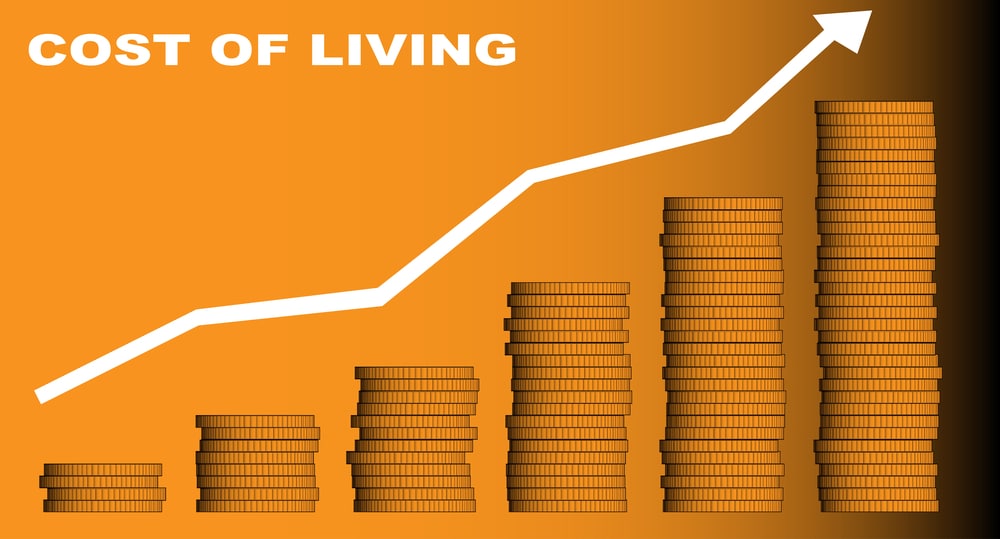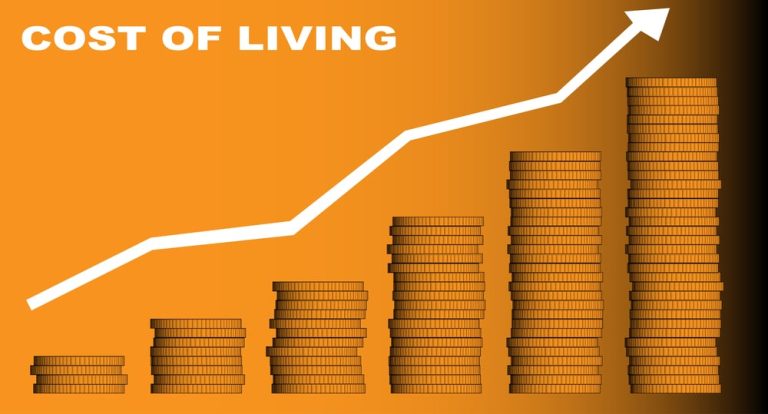In 2025, many people are struggling to maintain financial stability as the cost of living continues to rise and economic uncertainty affects income and savings. Avoiding serious financial mistakes has become one of the most important parts of protecting long-term wealth. This article explores the top ten financial errors that can weaken stability, limit investment growth, and reduce financial security. Common problems such as poor budgeting, unnecessary debt, and failure to plan for emergencies continue to trap individuals in stressful money cycles.
A lack of clear financial planning can also lead to risky investments and poor retirement preparation. By identifying and avoiding these mistakes, readers can make smarter financial choices, manage their income better, and improve future savings potential. The guide focuses on realistic strategies that help strengthen financial discipline and long-term planning in a world where every spending decision matters. With thoughtful money management, the right habits can replace damaging ones, helping to build a secure and sustainable financial foundation for the years ahead.
Top 10 Worse Financial Mistakes To Avoid In 2025
10. Relying on Outdated Money Beliefs

Holding on to financial habits from another era can be costly when markets and technology change. Practices that worked a decade ago may not serve well in 2025 where inflation, new tax rules, and digital payment systems shape everyday finance. Relying on gut feeling instead of checking current interest rates or contemporary investment options can lead to missed opportunities. For example keeping all savings in low interest accounts without reassessing alternatives can erode purchasing power over time. Similarly treating credit as a permanent cushion rather than a temporary tool raises risk when rates shift.
Modern money management benefits from updated knowledge about passive income ideas, digital wallets, robo advisors, and tax efficient saving vehicles. Regularly revisiting basic assumptions about risk tolerance, asset allocation, and savings targets helps align choices with the present economic reality. That means reviewing retirement plans for contemporary allowance for inflation and revising asset mix to reflect longer term goals. A willingness to adapt and learn new personal finance methods reduces exposure to outdated habits that can quietly drain future wealth.
9. Missing Clear Financial Targets

Without concrete financial targets it is difficult to direct saving and investment choices coherently. Broad desires such as wanting to be comfortable or wanting more freedom do not translate into measurable steps. Effective planning starts with defining short term and long term objectives, estimating required capital, and assigning timelines. Clear targets enable selection of appropriate investment vehicles whether that means low cost index funds for long term growth, short term cash buffers for emergencies, or rental property for passive income. Targets also inform debt reduction plans and give a framework for automatic savings and rebalancing.
In a year when cost of living pressures vary across regions, setting explicit goals prevents drift toward lifestyle inflation and supports disciplined saving. Monitoring progress with simple trackers or budgeting apps makes adjustments visible and keeps plans realistic. When targets are precise and reviewed regularly, financial decisions become proactive rather than reactive. That structured approach yields better tax planning, smarter investment choices, and clearer pathways to retirement readiness or major purchases.
8. Skipping a Practical Budget and Expense Tracking
![]()
Many financial setbacks start with a blind spot about cash flow. Ignoring daily expenses and not using a practical budget prevents discovery of recurring leaks like unused subscriptions or frequent small purchases that add up. In 2025 the market offers robust budgeting tools and apps that automatically categorize spending, suggest savings targets, and provide alerts when balances shift. Adopting one of these tools helps households see where income goes and how much can be allocated to emergency savings or investment accounts. A working budget does not have to be complicated.
Simple categories such as essentials, savings, debt repayment, and discretionary spending give immediate clarity. When expense tracking becomes routine the result is an ability to cut low value costs, prioritize high impact financial moves, and free cash for higher return opportunities. For people with variable income regular review months helps smooth rhythms and prevents months of overspending. Using digital tools to aggregate accounts also reduces mental load and provides real time visibility that improves financial discipline and decision making.
7. Failing to Build an Emergency Fund
.webp)
Lack of a cash cushion forces reliance on credit when unexpected events occur. Medical bills, sudden job changes, urgent home repairs, and other shocks happen without warning and can quickly derail long term plans if there is no accessible reserve. Financial professionals commonly recommend keeping a buffer of several months of living expense in liquid accounts so that investments can stay intact while short term needs are met. Building this fund deliberately removes the need to take on expensive short term debt and preserves the ability to take advantage of investment windows when they arise.
Establishing a consistent habit of setting aside a portion of each paycheck or payment increases the fund steadily. For households with irregular income it helps to set small automatic transfers to a separate account to prevent temptation to spend. Having an emergency fund is a foundational step in any resilient financial plan and reduces the risk that one costly event will cascade into long term hardship.
6. Letting High Cost Debt Grow Unchecked

Carrying balances with high interest rates reduces the capacity to save and invest. When a large share of monthly income goes toward interest payments, compounding works against wealth building rather than for it. Credit card balances, certain consumer loans, and payday style borrowing are especially damaging because interest charges can escalate quickly. Controlling debt begins with a realistic repayment plan that targets high rate obligations first or uses a consolidation option that lowers overall interest where feasible. Paying only the minimum is a common trap because it extends repayment time and multiplies total interest paid.
In 2025 changes in interest rate cycles mean the cost of carrying variable rate debt can rise unexpectedly. Financial discipline that focuses on eliminating high cost debt creates space for saving into growth oriented accounts and for building diversified income streams. Negotiating with lenders, transferring balances to lower interest products when available, and prioritizing principal reduction are practical measures to restore financial flexibility and reduce long term cost.
5. Waiting Too Long to Start Investing
Delaying entry into markets in an attempt to wait for perfect timing typically sacrifices the power of compound growth. Even modest regular contributions to broadly diversified portfolios tend to outperform attempts at market timing over long horizons. When contributions begin earlier compound returns have more time to work and portfolio volatility can be managed through gradual accumulation. Investment options can include low cost index funds, tax advantaged accounts where available, and carefully selected direct equity positions for those with appropriate risk tolerance.
In 2025 investors face both opportunities and new risks which make a long term consistent approach more valuable. Dollar cost averaging reduces the impact of short term swings and keeps investing aligned with savings discipline. Pairing early investing with a sound emergency fund and debt control strategy creates a balanced financial base. Reviewing asset allocation periodically ensures that growth potential is balanced with safety needs and retirement horizons are respected. Small regular commitments to investment often lead to meaningful long term wealth creation.
4. Letting Lifestyle Costs Expand with Every Raise

Income growth can be a stealthy enemy when every raise prompts larger housing, vehicles, travel, or entertainment commitments. That pattern, known as lifestyle inflation, can keep savings rates flat even as income rises. The more lifestyle expands the harder it becomes to reach substantial financial milestones like home ownership, meaningful retirement savings, or sizeable investment accounts. A prudent response is to consciously allocate a portion of any income increase toward long term goals while allowing only modest lifestyle upgrades.
Maintaining the same core living standard while boosting savings rates accelerates net worth growth. Regularly reexamining recurring expenses and maintaining a value centered spending plan helps keep the focus on what truly matters. This method preserves flexibility and prevents a situation where a higher income only produces greater monthly obligations without increasing real wealth. Over time disciplined allocation of raises to long term accounts produces far greater security than immediate consumption.
3. Underfunding Retirement and Pension Plans

Postponing retirement planning leaves fewer years for compound returns to accumulate and often requires much larger contributions later to reach the same target. Tax advantaged retirement vehicles and employer matching programs amplify the value of early contributions. Missing out on matched contributions is essentially leaving free money on the table and increases the burden of future saving. In 2025 the interaction between longer life expectancy and rising cost of living makes an ample retirement fund more critical than ever. A focused retirement plan begins with estimating required retirement income, maximizing available employer benefits, and making regular contributions that increase over time.
Reviewing the plan annually and shifting asset allocation as retirement nears protects savings from unnecessary risk. For those who can, capturing catch up contribution options in later years can help but early habit formation remains the most efficient path. Structuring retirement contributions to leverage tax advantages and employer programs reduces the total personal cost of securing future income.
2. Relying on a Single Income Source

A single paycheque model is fragile in modern labor markets. Industry shifts, automation, layoffs, and changing corporate structures can suddenly reduce or remove the primary income stream. Building additional revenue channels mitigates that risk. Side work that leverages existing skills, rental income, dividend producing investments, and small scale digital products create layers of income that cushion against shocks. Diversified income also enables faster debt reduction and more aggressive investing when opportunities appear.
Establishing another reliable revenue stream takes time and may begin small, but steady growth in secondary income sources broadens financial resilience. In a world of shifting job markets having multiple small to medium revenue lines provides freedom to be selective about primary employment choices and lowers exposure to sudden income loss. That economic flexibility supports long term planning and preserves options in uncertain times.
1. Ignoring Inflation and Rising Cost of Living when Planning

Treating nominal savings as equivalent to real wealth is a frequent mistake that reduces purchasing power over time. When inflation erodes the value of money, simply parking cash in low return accounts can mean fewer goods and services can be purchased in the future. Effective financial planning in 2025 accounts for price trends by setting savings targets that aim to outpace inflation, by choosing investments with real return potential, and by adjusting budgets to reflect rising essential costs. Regularly reviewing expected returns, expense growth, and tax changes keeps plans realistic.
Incorporating assets that historically provide inflation protection, increasing emergency and retirement targets where appropriate, and maintaining flexibility in spending plans are practical steps. Without these adjustments the nominal appearance of growth can be misleading and long term savings goals may fall short of required living expenses. Vigilant updating of financial plans ensures that wealth preserves purchasing power and that long term objectives remain achievable.



https://shorturl.fm/O6KTD